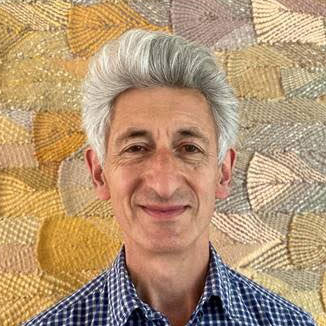The lockdown shake-up offers an ideal opportunity to change our lives for the better and, whereas addressing climate change is the highest priority and economic recovery is perceived as the primary concern, Fred London FRSA argues that considering how all of us might lead healthier lives would contribute to both of these priorities as well as wellbeing.
It has taken the havoc wreaked by Covid-19 to expose our dependency on the NHS and its indispensable staff. That growing awareness can also provide the impetus for improvements based on two connected challenges: improving the healthiness of the lifestyles we lead and maximising the healthiness of the environments we live in.
Our increasingly unhealthy lifestyles have alerted the world’s health authorities to an escalation of ‘avoidable illnesses’. Now Covid-19 has revealed the strong link between deaths amongst people with pre-existing health problems; about 90% of deaths involving Covid-19 occur in people with pre-existing conditions, such as heart disease, respiratory disease, diabetes or kidney disease, resulting in weaker immune systems that reduce the ability to fight infection. The causes of these conditions include sedentary lifestyles, poor diet, food poverty, substance abuse and mental illnesses aggravated by social isolation.
Poor air quality can exacerbate respiratory illnesses amongst people living near busy roads. Research shows that their life expectancy is shorter than that of those living in healthier places and that toxic air can lead to impaired cognitive ability among children and earlier onset of dementia among older people. These may result less from their lifestyle choices and more from issues relating to the inherent inequalities associated with living in locations that limit their chances of remaining healthy. Vulnerability to the effects of the virus has also been shown by increased death tolls from respiratory illnesses arising both from underlying conditions and newly diagnosed cases.
What can be done?
Design professionals refer to strategies aimed at overcoming the challenges presented by poor planning as healthy placemaking: the creation of places where health and wellbeing are accorded the highest priority. Walkable communities are the touchstones of healthy placemaking: human scale neighbourhoods consisting of three elements that work together to generate health-supporting environments:
- A compact, mixed-use urban structure that includes businesses and employment;
- Daily needs (for example, shops, healthcare, primary schools) within walking distance; and
- Integrated green/blue spaces easily accessible from all dwellings.
These three ingredients offer the convenience in daily life of being within 10 minutes’ walk of the facilities we need. The space occupied by the movement and parking of private vehicles is minimised, being allocated only to those with limited mobility. When grouped together, clusters of walkable communities become substantial settlements typically located around busier urban centres.
A good example of these ideas in practice isOklahoma City, which sells itself as having been “designed around people, not cars”. To address problems of obesity, Mick Cornett, Mayor since 2004, introduced dramatic changes to the city’s movement networks. Levels of obesity amongst the 600,000 population of this ultra-low density, car and fast-food dependent city, were the highest in America. Facilities for pedestrians were negligible and in 2007 Cornett announced: “This city is going on a diet and lose a million pounds.” Highways were narrowed, sidewalks widened and countless new ones built to access schools, libraries and other local services. Miles of cycle routes were constructed and a downtown streetcar was introduced to increase walkability and support densification. The ‘million pounds’was lost in 2012 as the city flourished to become the 22nd fittest in the US.
The cultural shift of prioritising health attracted citizens in their 20s to move back home, generating tax revenues that financed new facilities. Its success contributed to the raising of the city’s profile and economic performance, with journalist Ian Birrell stating: “There is no doubt Oklahoma City and its fat-fighting mayor deserve credit for their war against obesity, an inspiration for a country in which two-thirds of the population is overweight and has such a strong car culture.”
This victory over obesity demonstrates how the rebalancing of urban structures can transform them into healthier places. People-centred environments such as these can deliver several benefits simultaneously: improving air-quality, making the public realm feel safer and more attractive and incentivising exercise in daily life. This increases social interaction, strengthens communities, enhances a sense of wellbeing, generates platforms that boost local economies and delivers game-changing contributions towards tackling climate change.
Healthy placemaking makes no claim to be a ‘silver bullet’ that delivers healthier lives, but it involves strategies that aim to overcome barriers and promote positive outcomes. Environments that adopt the integrated qualities of this approach will reduce pressure on health services and offer decisive benefits to the wellbeing of countless citizens.
Fred London is an architect, masterplanner and placemaker.The theme of this article draws upon the RIBA publication: Healthy Placemaking – Wellbeing Through Urban Design, published in January 2020, shortly before Covid-19 struck.

Join the discussion
Comments
Please login to post a comment or reply
Don't have an account? Click here to register.
Can I make a plea that we do not neglect rural communities. Many of the same problems exist plus more like very poor public transport, the complete lack of cycle tracks or dedicated cycle lanes, difficult access to health care and the ongoing demise of local shops and other services. Add to that poor air quality where trunk roads pass through or close to villages.